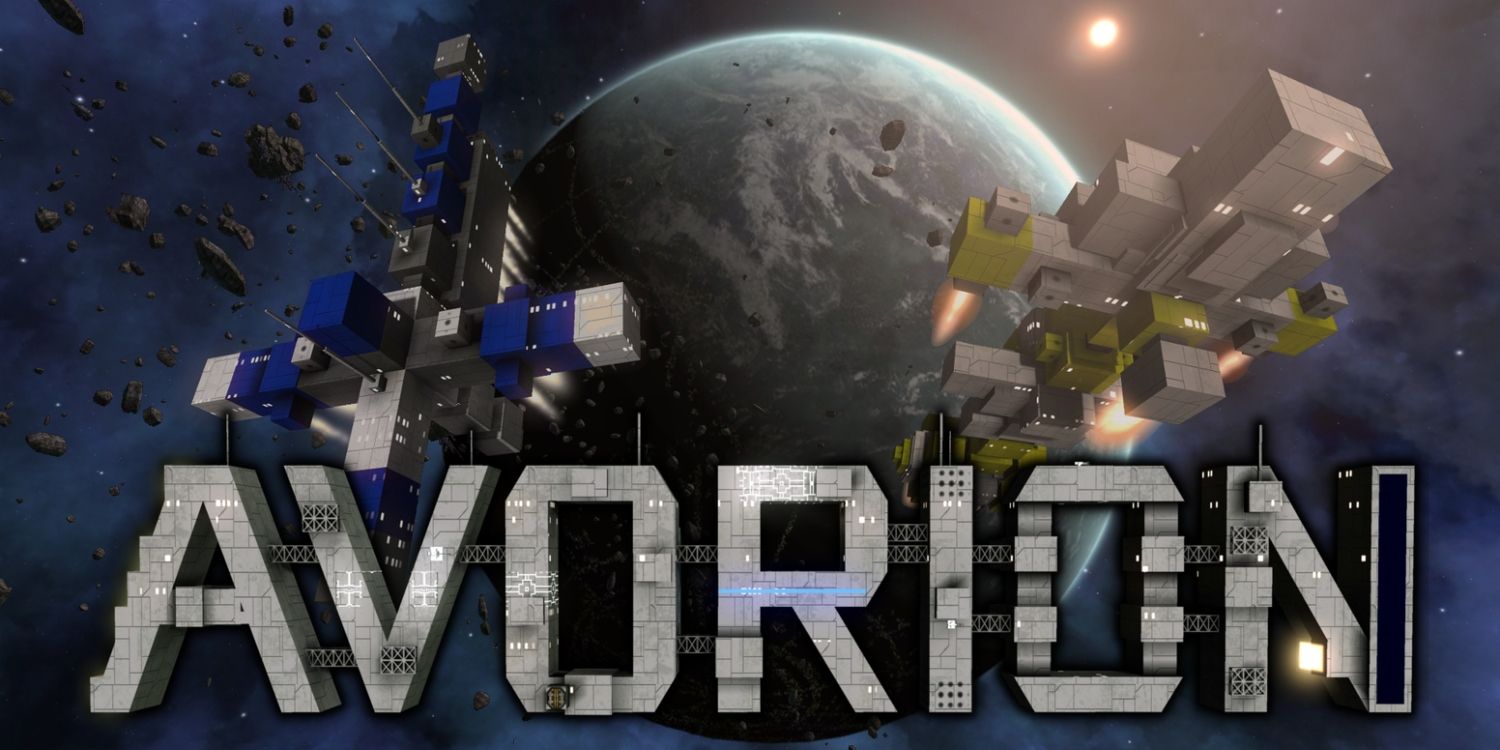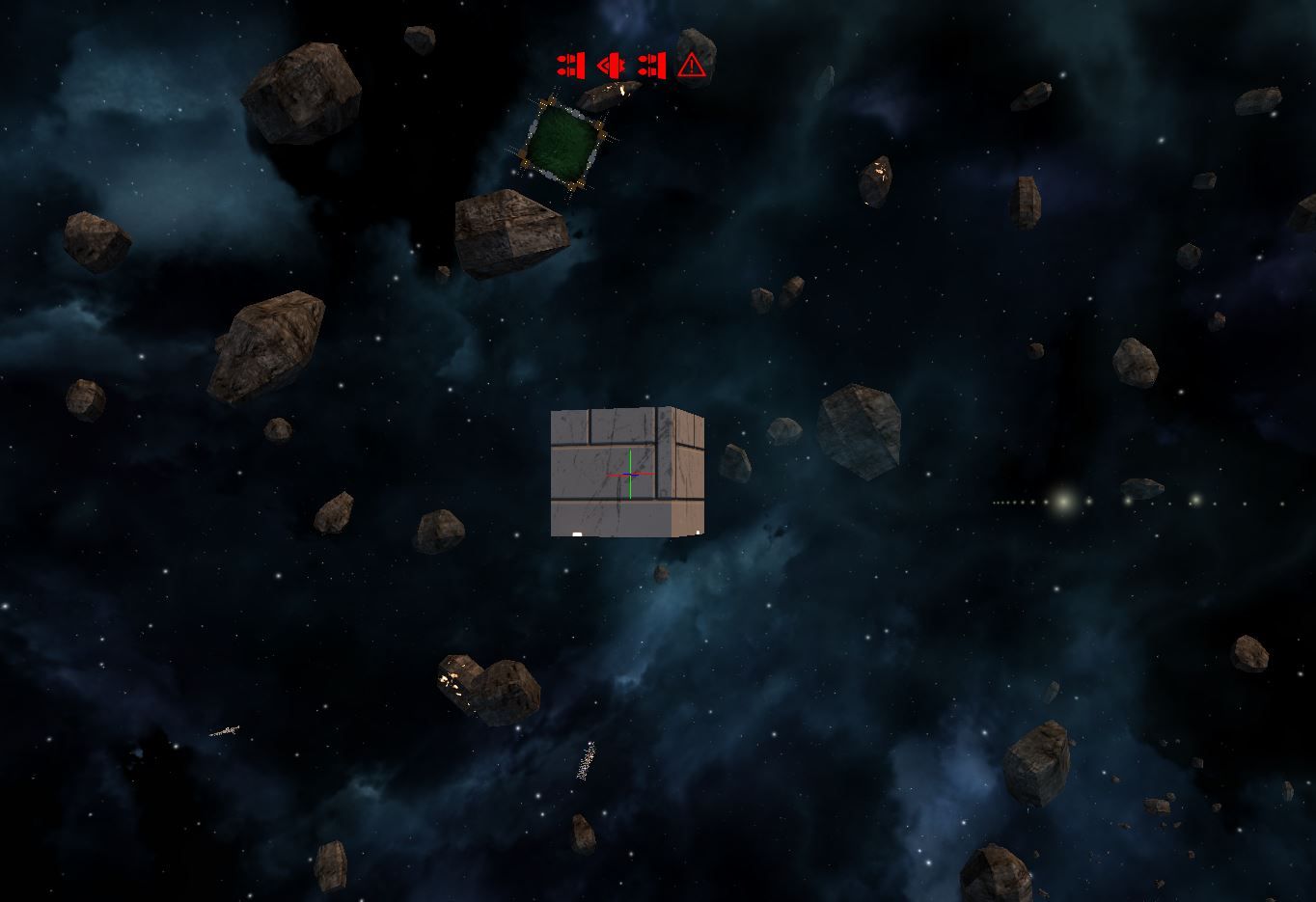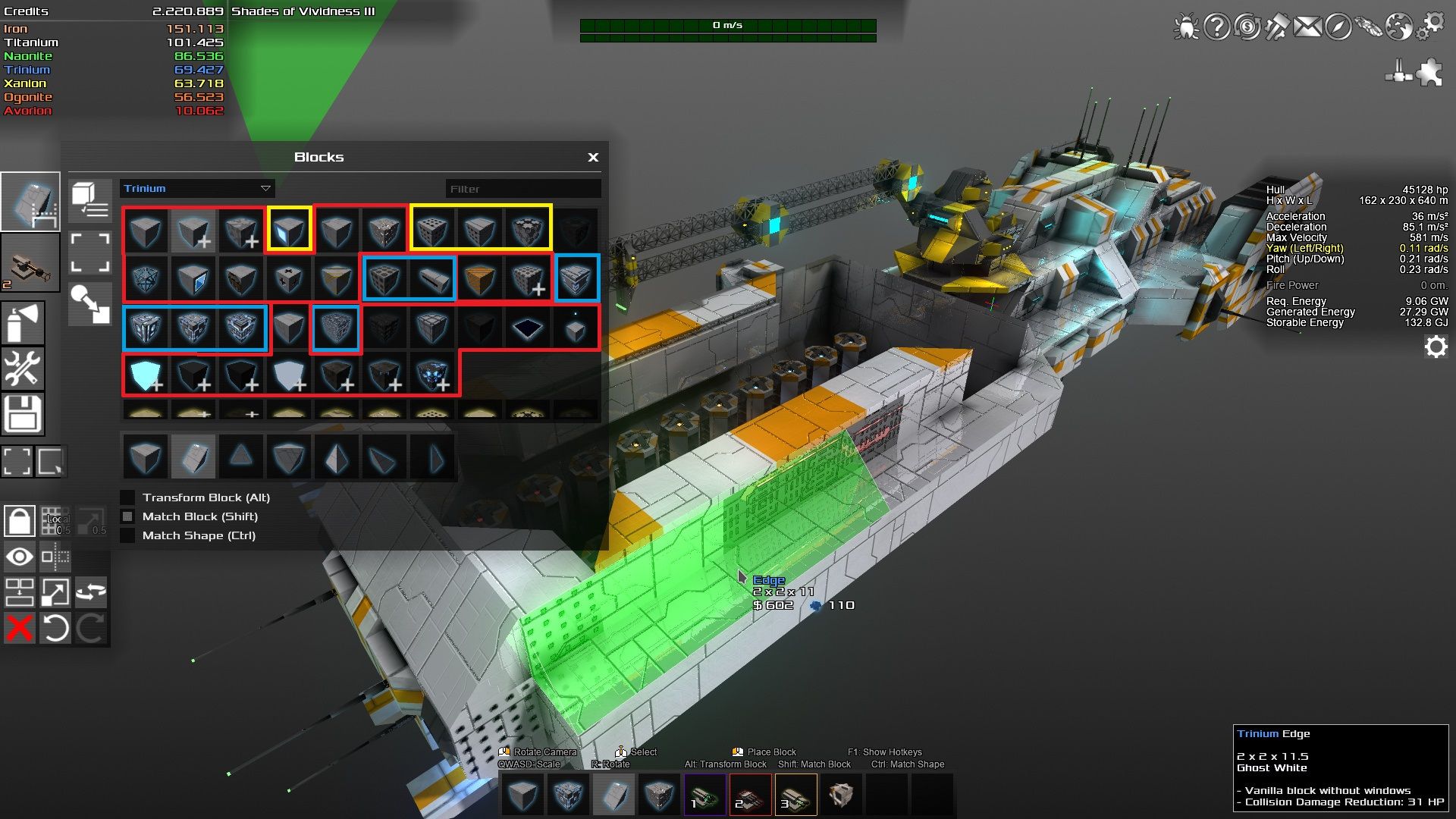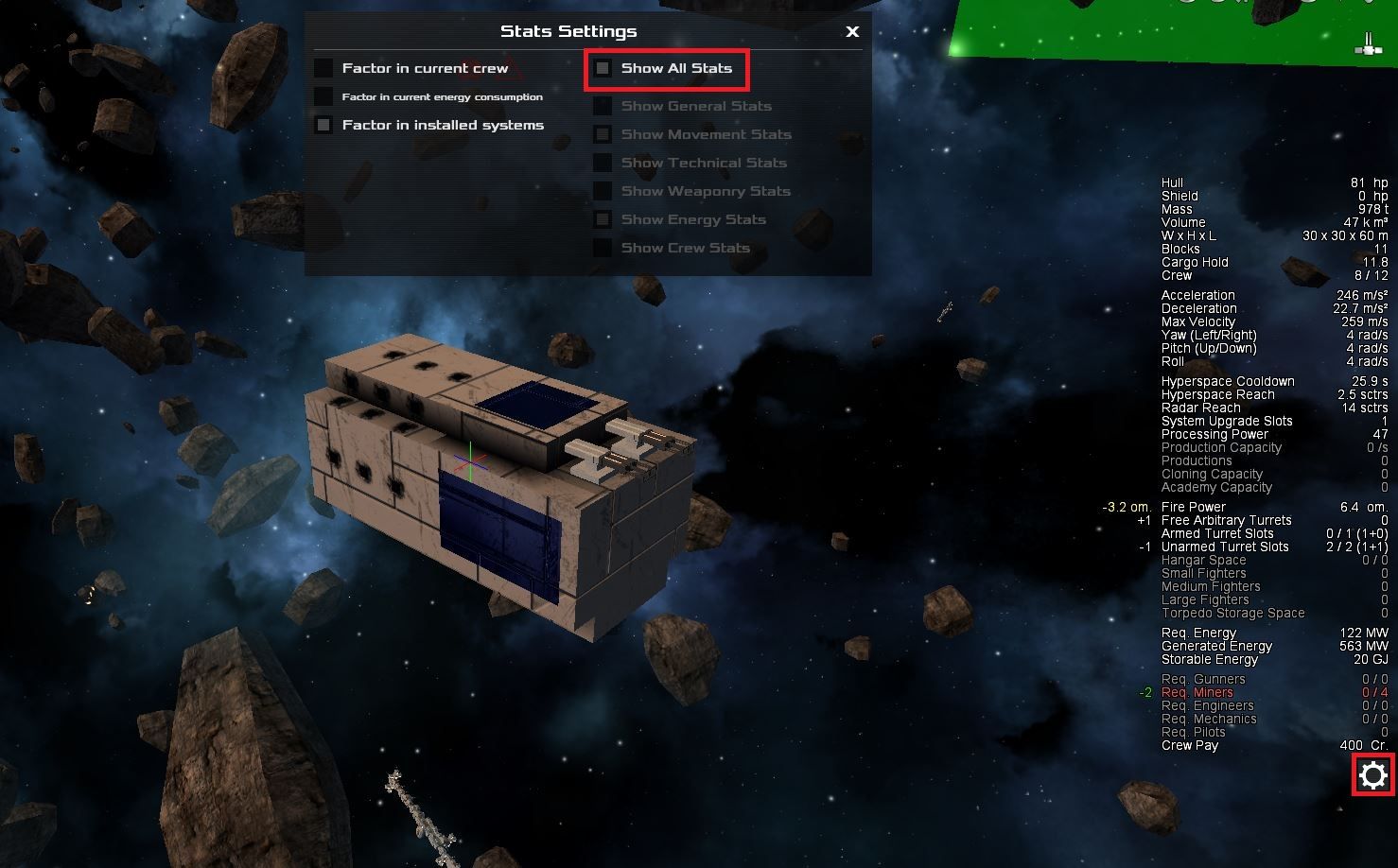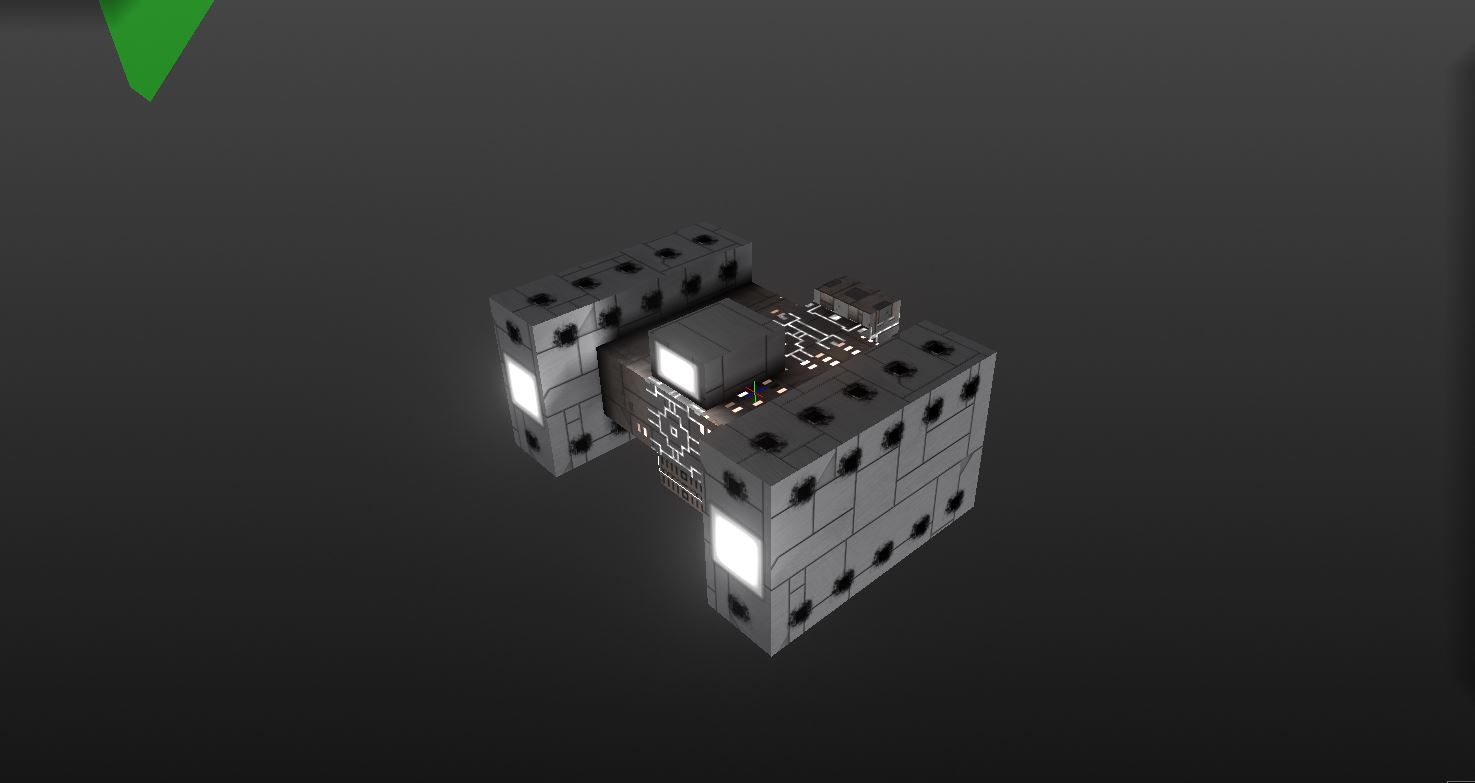The unearthly silence native to the open sky might bother some, but as an explorer, pirate, trader and defender, you'll welcome the challenge it provides in Avorion, a game that allows players to tame the stars.
The blocky textures and open-ended nature may remind some of Minecraft, but Avorion is a unique space-faring sandbox game with numerous role-playing aspects. The first task the player is presented with is to collect materials in a mining drone in order to build their first ship. This seems daunting at first. After all, the drone is so small, and the area around the player feels immense. But don't worry. Iron and Titanium are common in this first sector.
Build Mode
Once you've collected these materials, go to the small flag icon at the top right of the screen and "Found" your first ship. This places the player inside a small iron box without any capabilities, at which point they must press "B" to enter into Build mode. Here, the tutorials begin to fail.
The flashing red icons near the top of the screen indicate various stats that fall below the game's idea of adequate. Though the game does not clearly state it, at this point, it means that this small box has bad rotation, acceleration, braking and that it's weak. To resolve these, go to the icon of a block below the box that shows your materials and money. Some of these blocks have specific purposes and even secondary stats. Some exist to increase the durability of the hull, and others are purely decorative.
Most of the blocks are fairly self-explanatory (particularly the movement-related ones), and the game provides ample description of the block being moused over in the lower right-hand corner. Avorion also makes it clear that some blocks can't be made with certain materials, graying out any that are unavailable in the selected material. What the game doesn't say is that some blocks' stats are directly affected by the quality of the material being used to make them, but that for others, the material used simply changes how much they weigh and how durable they are.
Materials
Titanium is both stronger and lighter than Iron and is a higher-quality material for other stats. It increases Hull HP and other stats while decreasing Mass, which makes the choice between the two an easy one once the player has enough Titanium. However, once the player moves towards the center of the galaxy and begins to access better materials like Naonite and Trinium, their choices become far more complicated.
In general terms, the lightest material in the game is Trinium, while the heaviest and strongest material is the game's namesake, Avorion. In the image above, the blocks surrounded by red are ones for which Hull HP and Mass are the only considerations. For these blocks, it's a matter of whether the player wants a faster and less-armored ship or a slower and more durable ship. This includes all hull types, Cargo Holds, Crew Quarters, Hangars and more. Whether they're made of Iron or Avorion, the stats they provide remain the same, with the exception of their weight and durability.
The blocks in yellow are similar to the ones in red in that weight and durability are the main considerations, but these blocks are related to movement and speed. Unless the player intends to go without shields, these blocks are best when made of lighter materials -- Trinium if possible, Titanium if not. Aside from reducing the weight of the ship, which increases acceleration, max speed and maneuverability, the movement stats for these blocks actively improve when their weight is lower, and the difference in these blocks' stats becomes more varied the larger the ship is.
Blue-outlined blocks are heavily material-dependent. The higher-grade the material used to build them, the more effective they become. An Avorion Shield Generator will provide far more Shield HP than a Shield Generator made from any other material of the same size.
Design
While some players have managed to recreate famous ships from Star Wars or Mass Effect, these ships often suffer for their aesthetic nature. Ships that are more effective may not always be pretty, and that's okay!
In Build Mode, click the gear icon below the ship's stats and select "Show All Stats" to keep your eye on how each block effects your ship. An easy shape to aim for in the early game is a simple cylinder, or as close as you can get to one in a game primarily made up of blocks. A large engine, capped with minor facilities like a Cargo Hold and Crew Quarters and surrounded on all sides by Thrusters, is more than sufficient to get any player collecting materials for a more ambitious ship.
With early ships, Solar Panels help provide a bit more power for few materials. Try to keep the Required (Req.) Energy to, at most, half of the ship's Generated Energy, since boosting during flight takes a toll on your power reserves. Solar Panels will automatically face outward from the ship and will generate power no matter where the ship is. Remember to leave room at the front for the Mining Turrets the game provides from the start.
Upgrades
Once the player has some Titanium, they'll gain access to new blocks: Energy Containers, Generators and Integrity Field Generators. The Energy Container allows the player to build up an energy surplus, the Generator helps the ship create more energy (making Solar Panels obsolete) and the Integrity Field Generators increase the ship's durability to help minimize collision damage. Thrusters and Engines become more effective when built from Titanium, and all other block types have increased durability and lower mass, making a total upgrade wise when possible.
Block materials shouldn't be the only consideration when building an effective ship. Certain blocks, particularly Thrusters and Directional Thrusters, are more effective when placed near the front, back and edges of the ship. The ship's shape itself can also effect its speed and maneuverability. A cylinder is easy to control when it's small and light, but a flatter, more horizontal shape helps keep maneuverability up as the mass increases. Ships like the low-budget TIE Fighter above remain nimble despite their increased complexity.
Eventually, the player will gain access to more materials and block types that go with them. With Naonite comes Shield Generators and Hyperspace Cores; with Trinium, Hangars, Computer Cores and Academies; with Xanion, Cloning Pods and more. With dozens of ways to play, thousands of sectors to explore and a galaxy of mysteries to unravel, Avorion provides infinite possibilities for those willing to unlock them.

